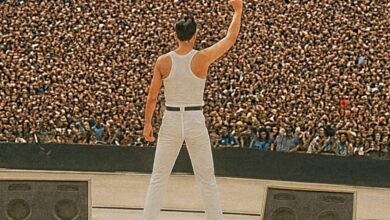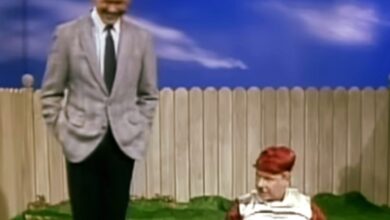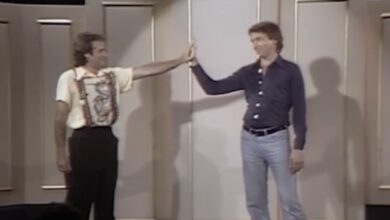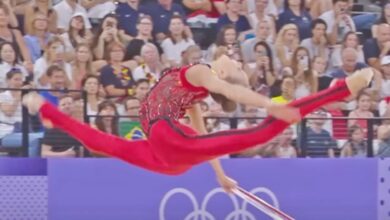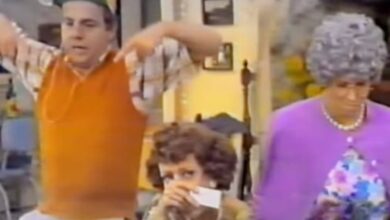Ann Wilson’s Soul-Stirring “Going to California”
The Stern Show studio isn’t built for grand spectacle, but that’s exactly why Heart’s take on Led Zeppelin’s “Going to California” landed so hard. With the cameras tight and the room quiet, Ann Wilson’s voice moved like weather rolling in, steady and inevitable, while Nancy Wilson’s acoustic playing kept everything grounded and clear. It felt less like a cover and more like a letter—one band of lifers writing to another, line by line, in a space small enough to hear the strings breathe.
What made the moment even richer was the way they honored the song’s fragile bones. “Going to California” is built on air and echo—restless miles, uncertain hope—and Heart leaned into that lightness. Nancy’s touch was patient, letting the chords hang so Ann could color the silence without ever forcing it. You could sense decades of stagecraft at work: the confidence to underplay, to trust the lyric, and to let the studio’s stillness amplify the feeling.
It also arrived with history at their backs. Heart’s relationship with Zeppelin isn’t casual; it stretches from early club days to high-profile moments where they’ve been asked to shoulder sacred material. When they spoke to Howard, they revisited the night they sang “Stairway to Heaven” for the 2012 Kennedy Center Honors—an interpretation so reverent and alive it reportedly brought Robert Plant to tears—before pivoting to this new Zeppelin homage. That continuity gave the Stern performance a sense of pilgrimage.
The visit itself was a snapshot of a band in motion. Heart came to SiriusXM’s Howard Stern Show on April 10, 2024, played in the room, talked through the past, and previewed the energy of their renewed chapter. Alongside “Going to California,” they tore into their own classics—“Barracuda,” “Magic Man”—reminding anyone who needed it that their catalog is its own mountain range. The blend of conversation and performance framed the Zeppelin cover as both tribute and thesis.
Ann’s vocal approach was a study in restraint. Instead of trying to outsing the original, she planted her feet and let the melody tell on her, drawing power from diction and breath. Notes landed with the kind of control that only arrives after thousands of shows, yet there was nothing mechanical about it; the phrasing felt lived-in, like turning familiar pages and noticing new margins scribbled with memory.
Nancy, for her part, played the role of quiet architect. Her acoustic figures didn’t crowd the lyric; they framed it, carving a path that let the vocal float. You could hear her long history with Zeppelin’s acoustic palette—the patience of “The Battle of Evermore,” the grace of open-string voicings—filtered through Heart’s house tone. It wasn’t mimicry. It was kinship, and the guitar had the last word whenever the voice needed to breathe.
Even in our clip-driven age, some performances refuse to shrink. When the Stern Show posted the video, it traveled quickly, not because it was flashy but because it was exact: the right song, by the right band, in the right room. The comments read like a roll call of listeners who hadn’t realized how much they needed this gentler corner of Zeppelin until Heart lit it up again.
There’s a long preface to moments like this. Decades ago, in their Lovemongers guise, the Wilson sisters were already tilting toward Zeppelin’s acoustic mystique, arranging space and hush into their own vocabulary. That affinity never left; it matured. Hearing “Going to California” now, you can trace a straight line from those stripped-back, harmony-forward readings to this poised studio turn, like a melody that’s learned to carry more weight without raising its voice.
Part of the cover’s charge is lyrical. “Going to California” scans like a traveler’s confession—half map, half wish. Heart leaned on that wanderer’s spirit rather than trying to inflate it into an anthem. Ann let certain words blur at the edges, as if memory itself were singing, and Nancy left little pockets of air between chord changes so the narrative never felt rushed. The result was hopeful without being naive, bruised without being bitter.
Another part is time. Zeppelin wrote it young; Heart sings it with the authority that only comes from arriving at many Californias and finding they don’t all look like the postcard. You could hear gentleness in that recognition—an understanding that the journey is the point, and that longing ages into something steadier when you let it. The Stern studio became a kind of mile marker where two eras shook hands.
Heart’s week around New York had a playful twist, too, and it showed how comfortable they are moving between reverence and fun. Just days before, they were on a Midtown rooftop with Jimmy Fallon, belting “Total Eclipse of the Heart” to soundtrack the actual solar eclipse—leaning into spectacle with a wink. On Stern, they did the inverse: stripping spectacle away and trusting a song to glow on its own. That range is the band in a nutshell.
The conversation also pointed forward. The Stern stop doubled as a signpost for Heart’s Royal Flush Tour, a broad sweep through arenas and festivals that underscored how ready they are to be a living, touring band again. They spoke about sharing bills with fellow lifers and old friends, and the Zeppelin cover felt like a blessing on the road—a reminder to keep the compass tuned to songs that breathe.
What lingers from the performance is the sense of scale: small room, big feeling. The camera angles were intimate, the mix present, and yet the song carried that wide-open sky it’s always had. It’s a neat trick—shrinking the physical space while widening the emotional frame—and it’s one Heart pulls off because they’ve never confused volume with size.
There’s also the matter of tone, that intangible glue. Nancy’s guitar had a bell-like clarity without being sterile, and Ann’s vocal sat just ahead of the beat, giving the lyric a weightless tilt. Every choice seemed to serve the same end: honoring the original’s delicacy while inviting new listeners to hear it with fresh ears. If you’ve ever loved a song so much you introduced it to your friends, that was the energy in the room.
Coverage after the fact emphasized how naturally Heart moves in Zeppelin’s world. Writers noted the throughline from the Kennedy Center “Stairway” to this broadcast, framing the Stern take as a deliberate return to that shared language of acoustic mystery and melodic ache. In that sense, “Going to California” wasn’t a detour in the set; it was a homecoming.
And still, for all the context, the clip stands on something simpler: gratitude. Gratitude for songs that survive trends, for artists who keep learning how to say less and mean more, for spaces where a camera can capture breath becoming music. You watch the final chord hang and realize nothing else needed to happen. The message got where it was going.
If the performance drew Zeppelin faithful and Heart diehards into the same comment thread, it’s because both groups recognize the same truth: reverence and reinterpretation aren’t enemies. They’re partners. Heart didn’t try to replace the original; they tried to meet it on the road, offer water, and walk a few miles together. That’s how a cover becomes a conversation rather than a contest.
By the time the last shimmer faded, the studio looked the same, but the song felt new. That’s the quiet magic of a seasoned band paying attention—to the lyric, to the room, to the lineage they’re part of. “Going to California” traveled again, this time by way of two sisters who’ve spent a lifetime making borrowed songs sound like old friends, and their own songs feel like places you’ve always known.
